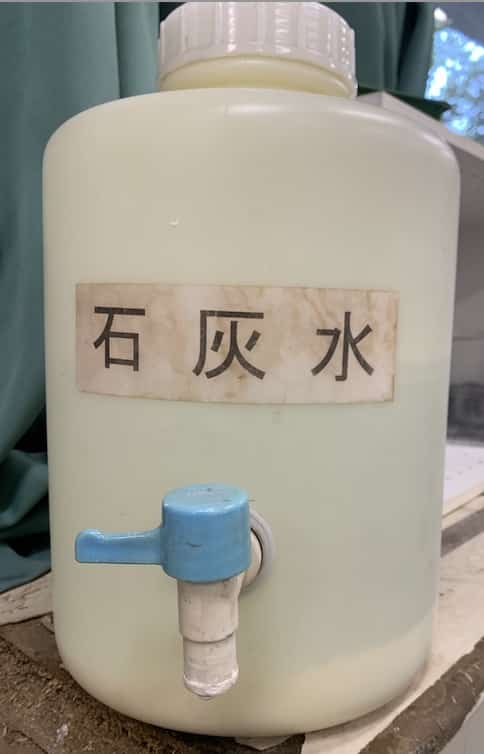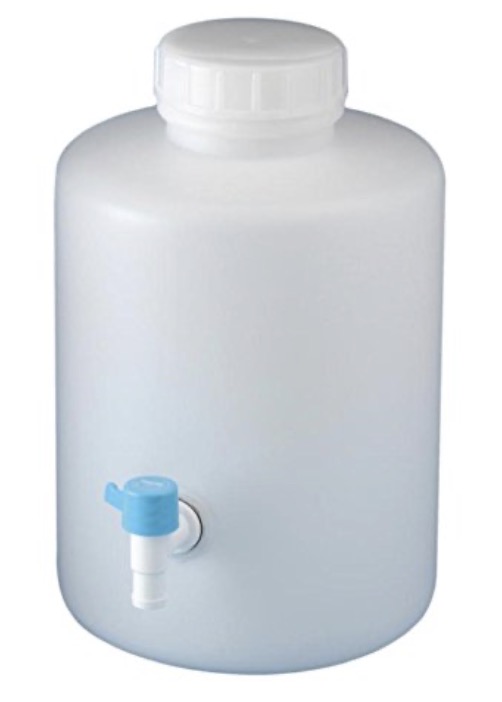Making and Disposing of Limewater (Do You Buy Limewater? It’s Actually Easy to Make in a Science Lab!)

In a science class, when we talk about detecting carbon dioxide, limewater is the standard solution. But are you a teacher who buys it every time? Of course, it’s one way to save time. However, limewater is actually very easy to make yourself!
Why spend money and precious lab space on something that’s mostly water? Making it yourself is faster, cheaper, and gives you more flexibility in your lessons.
Here’s how we make limewater in our school’s lab. This method is practical for any science classroom, so give it a try!
We usually prepare it in a large tank, following a method similar to what’s described on the Phys-Edu Net website. You can even buy special limewater dispensers with a tap at the top, which makes it super easy to get the clear liquid from the top.

How to Make the Solution
Calcium hydroxide is only slightly soluble, with about 0.16 g dissolving in 100 g of water at 25°C. To make limewater, add a large amount (50 g or more) of calcium hydroxide to 500 cm³ of water, mix well, and then leave it covered and undisturbed for two days to a week. The undissolved calcium hydroxide will settle, and you should use the clear liquid at the top.
Storage
Store the solution in a sealed container.
Important Precautions
Calcium hydroxide is an alkaline chemical, so be careful not to get it on your skin or in your eyes, nose, or mouth. Always wear safety glasses when handling it. Do not confuse calcium hydroxide (slaked lime) with calcium oxide (quicklime), which is used in desiccants. Quicklime reacts with water to generate a large amount of heat, which is dangerous. If any gets into your eyes or nose, rinse immediately with plenty of water and seek medical attention. If it gets in your mouth, rinse well.
Disposal Method
Dispose of the undissolved calcium hydroxide as non-burnable waste. The limewater solution should be diluted with a large amount of water before being discarded.
Why Use So Much Calcium Hydroxide?
We received a question asking why so much calcium hydroxide is needed when only about 0.16 g dissolves in 100 g of water (meaning you’d only need 2.4 g for 500 mL).
One reason is that using an excess amount helps it dissolve more easily. Another reason is for convenience and repeated use. By keeping a large amount of solid calcium hydroxide in the container, you can simply add more water and stir whenever the limewater runs low, and it will be ready to use again.
When you add water, you should fill the container to the brim to minimize contact with carbon dioxide in the air. This is because carbon dioxide reacts with the limewater to form a film of calcium carbonate on the surface.
Limewater is also sold by educational supply companies, but it’s mostly water, which feels like a waste of money. It’s much better to make it yourself and use the leftover budget for other things.
Conclusion
Teachers who are used to buying limewater are often surprised at how easy it is to make themselves. Since you can make it with materials you already have in the lab, give it a try when you’re preparing for your next class. Science classes become more personal and fun with just a little effort and creativity!


